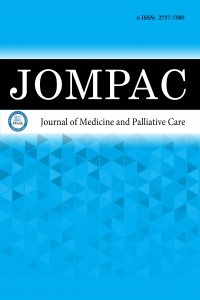1.
Holers VM. Complement and its receptors: new insights into human disease. Annu Rev Immunol. 2014;32:433.
2.
Derzsy Z, Prohászka Z, Rigó JJ, Füst G, Molvarec A. Activation of the complement system in normal pregnancy and preeclampsia. Mol Immunol. 2010;47(7-8):1500-1506.
3.
Romano R, Giardino G, Cirillo E, Prencipe R, Pignata C. Complement system network in cell physiology and in human diseases. Int Rev Immunol. 2021;40(3):159-170.
4.
Abu-Raya B, Michalski C, Sadarangani M, Lavoie PM. Maternal immunological adaptation during normal pregnancy. Front Immunol. 2020;11:575197.
5.
Mor G, Cardenas I. The immune system in pregnancy: a unique complexity. Am J Reprod Immunol. 2010;63(6):425-433.
6.
Bulla R, Bossi F, Tedesco F. The complement system at the embryo implantation site: friend or foe? Front Immunol. 2012;3:55.
7.
Blakey H, Sun R, Xie L, et al. Pre-eclampsia is associated with complement pathway activation in the maternal and fetal circulation, and placental tissue. Pregnancy Hypertension. 2023;32:43-49.
8.
Unterscheider J, O’Donoghue K, Daly S, et al. Fetal growth restriction and the risk of perinatal mortality-case studies from the multicentre PORTO study. BMC Pregnancy Childbirth. 2014;14(1):63.
9.
Chauhan SP, Beydoun H, Chang E, et al. Prenatal detection of fetal growth restriction in newborns classified as small for gestational age: correlates and risk of neonatal morbidity. Am J Perinatol. 2014;31(03):187.
10.
Leitner Y, Fattal-Valevski A, Geva R, et al. Neurodevelopmental outcome of children with intrauterine growth retardation: a longitudinal, 10-year prospective study. J Child Neurol. 2007;22(5):580.
11.
Pavlicev M, Wagner GP, Chavan AR, et al. Single-cell transcriptomics of the human placenta: inferring the cell communication network of the maternal-fetal interface. Genome Res. 2017;27(3):349-361.
12.
Abbas Y, Turco MY, Burton GJ, Moffett A. Investigation of human trophoblast invasion in vitro. Human Reproduct Update. 2020;26(4):501-513.
13.
Kingdom J, Huppertz B, Seaward G, Kaufmann P. Development of the placental villous tree and its consequences for fetal growth. Eur J Obstetr Gynecol Reproduct Biol. 2000;92(1):35-43.
14.
Girardi G. Complement activation, a threat to pregnancy. Semin Immunopathol. 2018;40(1):103-111.
15.
Regal JF, Burwick RM, Fleming SD. The complement system and preeclampsia. Curr Hypertens Rep. 2017;19(11):87.
16.
Isaksson GL, Nielsen LH, Palarasah Y, et al. Urine excretion of C3dg and sC5b-9 coincide with proteinuria and development of preeclampsia in pregnant women with type-1 diabetes. J Hypertens. 2023;41(2):223-232.
17.
Crisafulli F, Andreoli L, Zucchi D, et al. Variations of C3 and C4 before and during pregnancy in systemic lupus erythematosus: association with disease flares and obstetric outcomes. J Rheumatol. 2023;50(10):1296-1301.
18.
Hurler L, Toonen EJM, Kajdácsi E, et al. Distinction of early complement classical and lectin pathway activation via quantification of C1s/C1-INH and MASP-1/C1-INH complexes using novel ELISAs. Front Immunol. 2022;13:1039765.
19.
Agostinis C, Zito G, Toffoli M, et al. A longitudinal study of C1q and anti-C1q autoantibodies in homologous and heterologous pregnancies for predicting pre-eclampsia. Front Immunol. 2022;13:1037191.
20.
Pyo JY, Lee LE, Ahn SS, Song JJ, Park YB, Lee SW. Total haemolytic complement activity at diagnosis as an indicator of the baseline activity of antineutrophil cytoplasmic antibody-associated vasculitis. J Rheumat Dis. 2021;28(2):85-93.
21.
American College of Obstetricians and Gynecologists. Intrauterine growth restriction. Practice Bulletin-Clinical Guidance 2020-ACOG No: 12.
22.
Karnaukhova, E. C1-inhibitor: structure, functional diversity and therapeutic development.Curr Med Chem2022;29(3):467-488.
23.
Tanaka KA, Buehler P, Stewart KE. High plasma levels of C1-inhibitor are associated with lower risk of future venous thromboembolism”: comment from Tanaka et al. J Thrombos Haemostas. 2023;21(10):2991-2992.
24.
Grover SP, Snir O, Hindberg K, et al. High plasma levels of C1-inhibitor are associated with lower risk of future venous thromboembolism. J Thrombos Haemostas. 2023;21(7):1849-1860.
25.
Dorresteijn MJ, Visser T, Cox LAE, et al. C1-esterase inhibitor attenuates the inflammatory response during human endotoxemia. Critical Care Medicine, 2010;38(11):2139-2145.
26.
Baker JW, Craig TJ, Riedl MA, et al. Nanofiltered C1 esterase inhibitor (human) for hereditary angioedema attacks in pregnant women. Allergy Asthma Proceed. 2013;34(2):162-169.
27.
Thomson TM, Toscano-Guerra E, Casis E, Paciucci R. C1 esterase inhibitor and the contact system in COVID-19. Br J Haematol. 2020;190(4):520-524.
28.
Blakey H, Sun R, Xie L, et al. Pre-eclampsia is associated with complement pathway activation in the maternal and fetal circulation, and placental tissue. Pregnancy Hypertension. 2023;32:43-49.
29.
Girardi G. Guilty as charged: all available evidence implicates complement’s role in fetal demise. Am J Reproduct Immunol. 2008;59(3):183-192.
30.
Lynch AM, Gibbs RS, Murphy JR, Giclas PC, Salmon JE, Holers VM. Early elevations of the complement activation fragment C3a and adverse pregnancy outcomes. Obstetr Gynecol. 2011;117(1):75-83.
31.
Qu XW, Jilling T, Neerhof MG, Luo K, Hirsch E, Thaete LG. Unilateral uterine ischemia/reperfusion-induced bilateral fetal loss and fetal growth restriction in a murine model require intact complement component 5. J Reproduct Immunol. 2012;95(1-2): 27-35.
32.
Burwick RM, Feinberg BB. Eculizumab for the treatment of preeclampsia/HELLP syndrome. Placenta. 2013;34(2):201-203.
33.
Girardi G. Complement inhibition keeps mothers calm and avoids fetal rejection. Immunolog Investigat. 2008;37(5):645-659.

